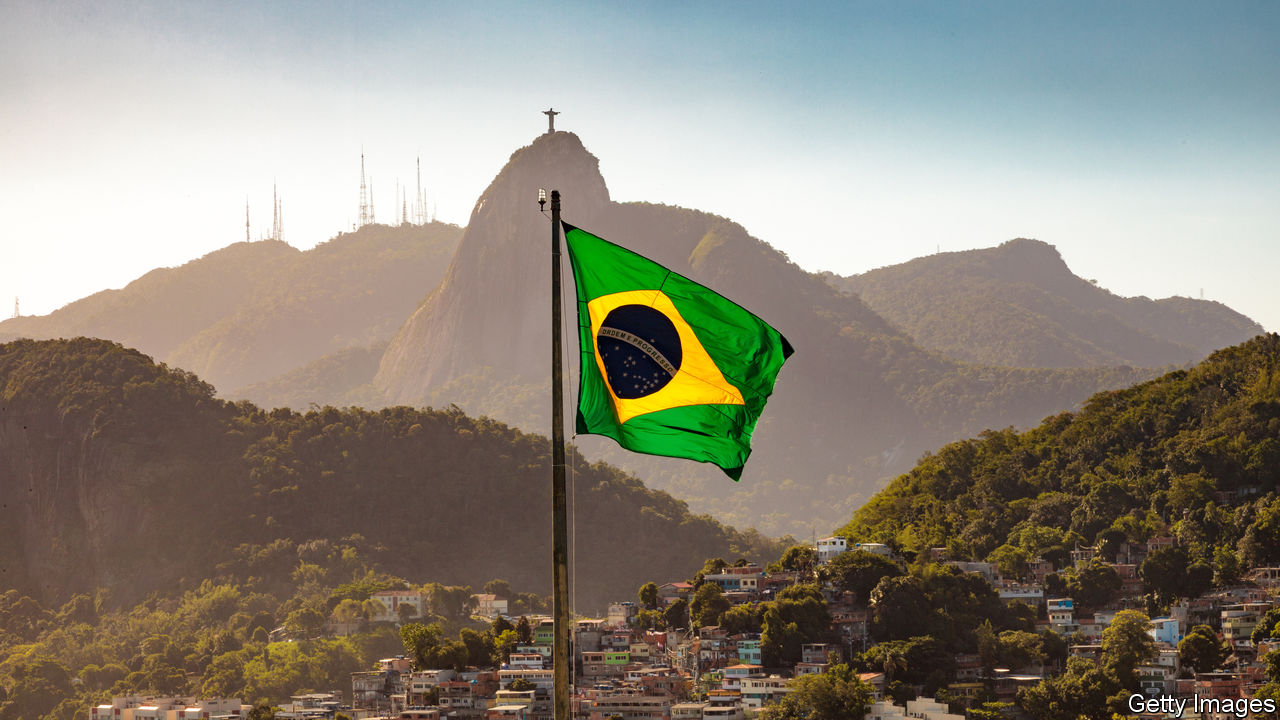Chronic governance failings mean it is in a battle with itself

RUDI DORNBUSCH, a renowned economist who died in 2002, said there were two sorts of currency crisis. The pre-1990s kind is slow. It starts with an overvalued exchange rate, which gives rise to a trade deficit. Foreign-exchange reserves are gradually run down to pay for it. When they are gone, the game is up. The currency drops. The finance minister loses his job. But life goes on much as before. The world does not collapse.
The second sort of crisis is the first sort on steroids. A country that might once have blown some World Bank loans on bad policies is able to tap global capital markets for billions of dollars to misuse. Domestic banks join the party. The economy booms. When the flow of capital suddenly reverses, the currency collapses. Bankruptcy is widespread. The damage is big enough to affect others.
Brazil would seem to demand a third category. Elections this month will decide its next president and the character of its congress. They will thus shape the response to a slow-motion financial crisis. The drama is likely to be played out in the currency market. The impact might be far-reaching. But Brazil displays no symptoms of an old-fashioned balance-of-payments crisis. Nor is it at the mercy of global capital. Brazil’s crisis is, in essence, a battle with itself.
Compare Brazil with Argentina and Turkey, both in the eye of market storms this year. They fit the template for a currency crisis. Both had run large deficits on the current account, a broad measure of the trade balance. These were financed by foreign borrowing, much of it in dollars. Both suffer high inflation. Both had skimpy foreign-exchange reserves. Brazil is different. Its current account is broadly in balance. Inflation is close to a record low. Its plentiful currency reserves dwarf its dollar debts.
Brazil’s problem is that its government finances are on a dangerous path. Public debt has risen from 60% to 84% of GDP in just four years. That owes a lot to a collapse in revenues after 2013. A brutal recession did not help. But the budget had been flattered by windfall receipts from a mining boom and credit-fuelled consumer spending. Those will not be repeated.
The third way
That means spending cuts are needed to fix the public finances. The government wage bill has grown rapidly. But over-generous pensions are a far bigger problem. They already account for 55% of non-interest public spending. The cost will go on rising as Brazil ages. Things might be worse were it not for a constitutional amendment in 2016, which caps the rise in public spending. An attempt to reform pensions was aborted when the president, Michel Temer, was implicated in the corruption scandals that have seen one of his predecessors impeached and another jailed.
In a different Brazil, politics would seek to reconcile the claims of bondholders (who are almost all Brazilian savers), pensioners, well-paid government workers and the rest of the country. The last group has suffered a squeeze on public services and living standards to make the sums add up. Instead, the corruption crisis has engulfed the governing class. The two front-runners for president are polarising figures who might struggle to navigate pension reform through congress. The crunch point might be next August, if not before, says Arthur Carvalho of Morgan Stanley. A budget for 2020 must be submitted then. If pension reform is not in place, a big squeeze will be needed elsewhere to stay below the spending cap, he says. Or the cap itself will have to be lifted.
Bondholders would take fright. Though foreigners hold little of Brazil’s debt, there would still be capital flight, a falling currency and rising bond yields. As Brazilian savers anticipate the inflation and economic chaos that will result from soaring public debt, they will seek to escape it. Savers elsewhere in Latin America have long held dollar accounts offshore as a shield from inflation at home. This would be novel for Brazilians, says Mr Carvalho. But because short-term interest rates have been slashed to reflect low inflation, the opportunity cost of pulling money from Brazil has rarely been lower.
Nothing is ever entirely new. The symptoms of Brazil’s past crises were high inflation and external deficits. But below the surface, the underlying problem was lax fiscal policy, says Armínio Fraga of Gávea Investimentos, a hedge fund, and a former governor of Brazil’s central bank. In the slow-burning sort of crisis, said Dornbusch, a mid-course correction can prevent the worst. Brazil might yet manage that. If it cannot, events are likely to speed up dramatically.
No comments:
Post a Comment
Note: Only a member of this blog may post a comment.